Vertical Fortresses of the Desert: Tataouine's Abandoned World Pt. 2
The mountain citadels of Chenini—where Amazigh heritage clings to vertical cliffs
Note: As the afternoon sun continued its arc across the Saharan sky, our expedition through ancient Berber settlements took us deeper into the cultural heartland of a people whose way of life balances precariously between preservation and extinction. Having explored the horizontal world of ksour with their honeycomb storage chambers and centuries-old olive trees, we now ventured into Chenini—a vertical alternative where communities chose height over breadth, carving existence into the very face of cliffs where human settlements defied gravity and traditional knowledge faced its own precipice.
Chenini: The Last Guardians of Mountain Memory
Arriving at Chenini felt like approaching a civilization suspended between earth and sky. The ancient Amazigh village clung to the mountainside with the same tenacity as its few remaining inhabitants hold onto their heritage—defiant against time, climate, and changing worlds. Golden stone buildings seemed to grow organically from the rocky cliff face, rising in terraced levels that blurred the line between human creation and natural formation. From a distance, the striking white mosque near the village entrance stood in sharp contrast to the earthen tones around it, like a bright anchor tethering the community to both tradition and modernity.
Before we could begin our ascent, a young man in his twenties emerged as if conjured from the landscape itself. Dressed in traditional Amazigh clothing—loose-fitting and earth-toned—he approached our car with the confident stride of someone who had spotted tourists many times before. Our initial polite decline of his guiding services met with a simple, practical truth: "The road ahead is dangerous. You cannot drive to the top." When our stubborn attempt to continue proved his assessment correct, we backed down the precarious incline and reconsidered our options.
"My name is Ayoub," he introduced himself with a slight bow, his English carrying traces of multiple linguistic influences. We negotiated a reasonable fee, left my unwilling mother and aunt at a small café at the mountain's base, and began our ascent on foot with Ayoub leading the way.
The path spiraled upward through ancient stone alleyways barely wide enough for two people to walk side by side. Adobe walls in varying states of repair alternated between pristine white and crumbling earthen tones, their surfaces telling stories of countless seasons of sun, wind, and occasional rain. Doorways—some still intact with their characteristic wooden doors reinforced with rusty metal hardware, others merely openings to abandoned spaces—punctuated our climb.
"My family has lived in Chenini for seventeen generations," Ayoub mentioned casually, as if discussing last week's weather rather than a lineage stretching back centuries. "Before that, we came from..." he gestured vaguely eastward, a direction that encompassed enough geography and history to include countless origin stories.
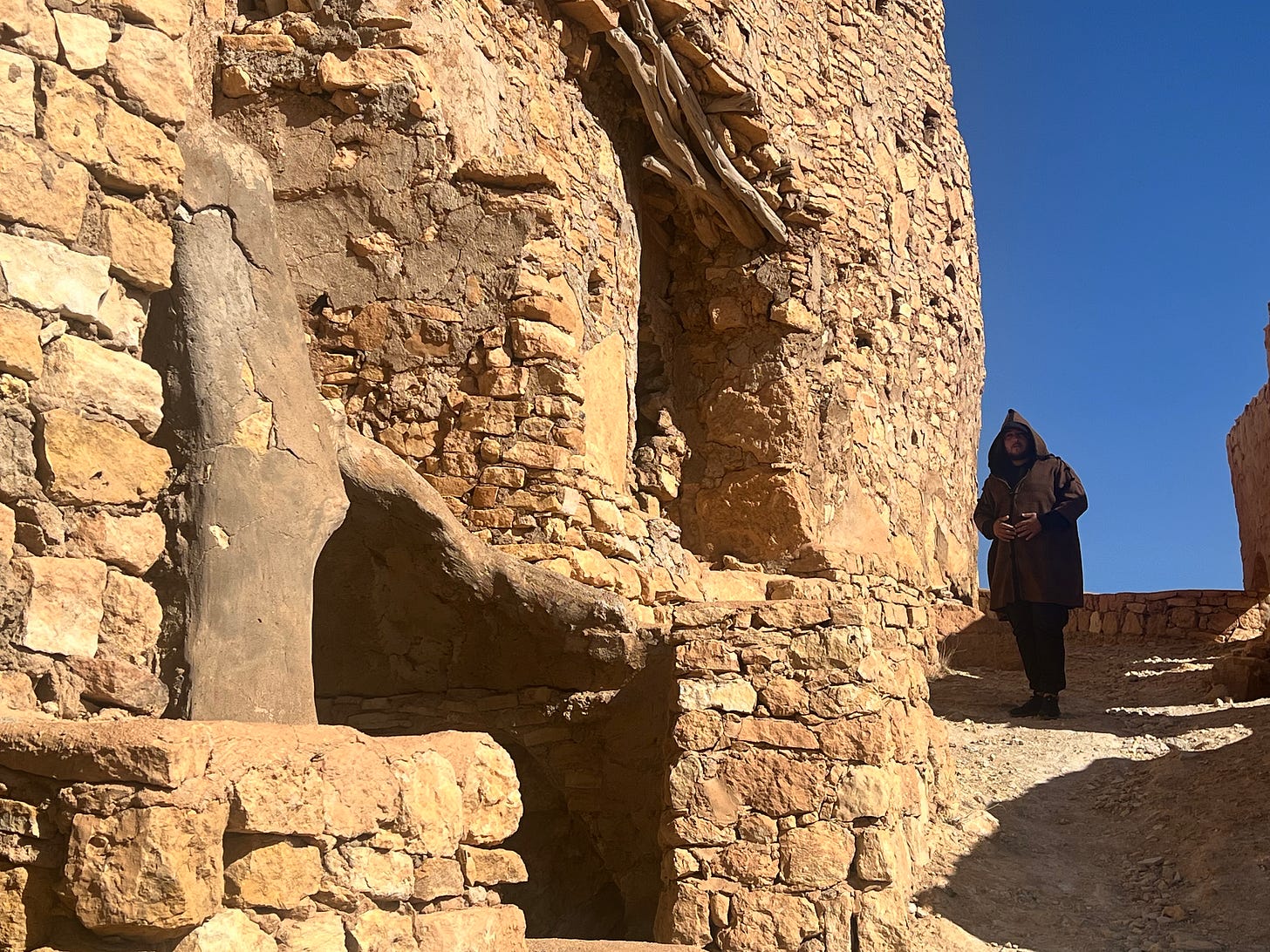
As we climbed higher, the modern world fell away with each step. No power lines crossed our path here, no satellite dishes interrupted the ancient silhouette against the sky—except for a solitary cellular tower in the distance, its modern metal frame looking strangely alien against the ancient landscape. The village had electricity, Ayoub explained, but many modern conveniences remained foreign to these heights. Why install air conditioning when the ancient troglodyte cave homes maintained perfect temperature year-round? Why rush to build modern plumbing when the community's water management systems had sustained life here for centuries? The pragmatic wisdom embedded in these choices felt both archaic and startlingly relevant to contemporary sustainability challenges.
Reaching a natural overlook, we paused to catch our breath. From here, we could see my mother and aunt below, tiny figures occasionally waving up at us from their comfortable café. The panorama that unfolded before us stretched beyond mere scenery into something that rewrote my understanding of human adaptation. Miles of arid landscape spread in every direction, the harshness of the terrain making human habitation seem impossible. Most striking were the faint zigzag patterns etched into the distant hillsides—the ghostly remains of ancient paths where the Amazigh once led their livestock up to grazing areas.
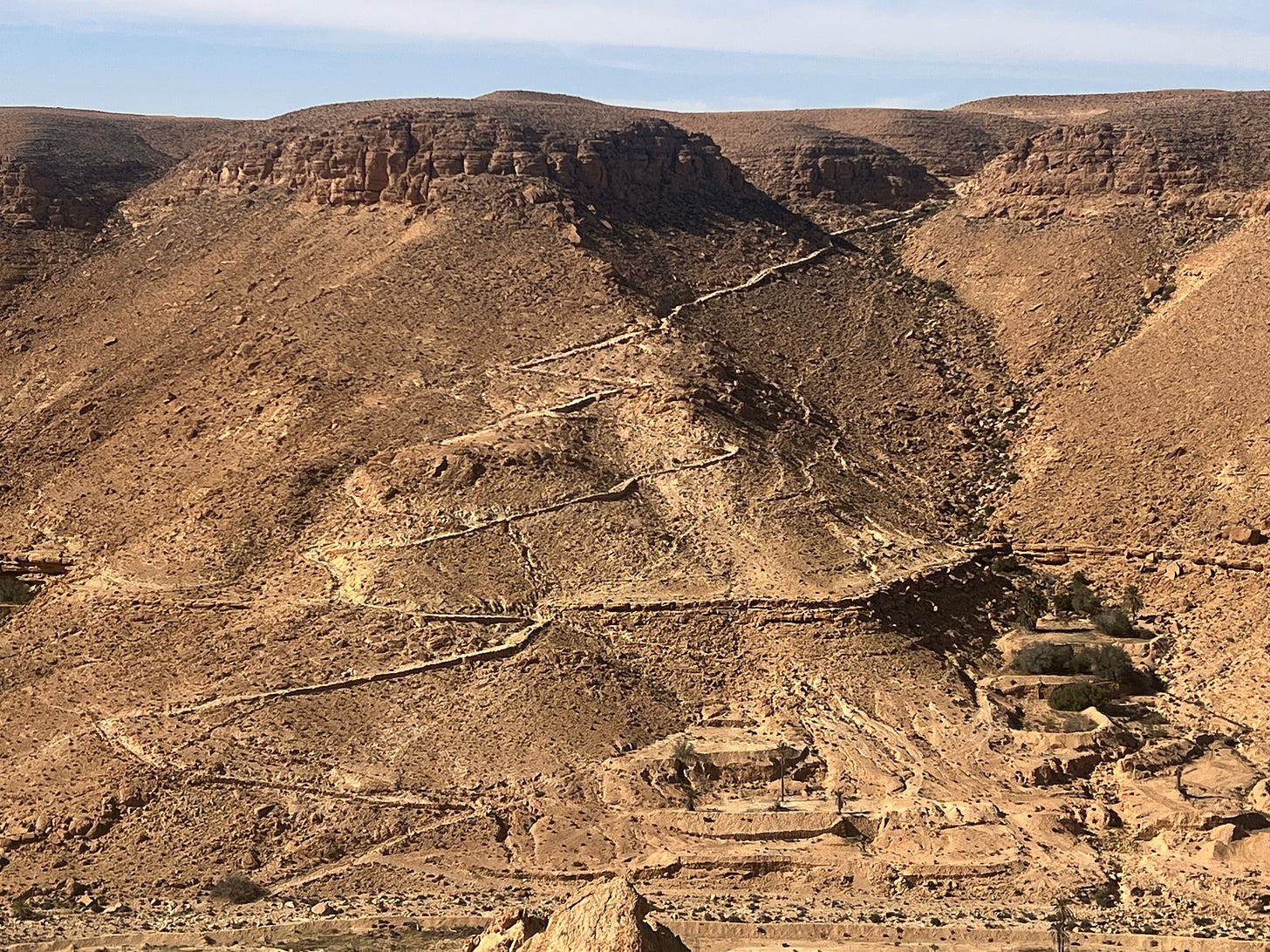
Ayoub pointed to a single palm tree in the distance, standing in solitary green defiance against the khaki canvas of desert.
"That is how we know where water is," he explained, his voice carrying the matter-of-factness of inherited knowledge. "Under that tree, deep below, there is water. Always has been. Our grandfathers' grandfathers built near these signs."
I suddenly realized I was looking at an oasis—not the elaborate fantasy of resort brochures with swimming pools ringed by imported palms, but the real thing: a genuine lifeline in the desert, a geographical miracle that determined where communities could form and survive. That single tree represented the difference between existence and absence, between life and empty landscape.
"For two thousand years, the Amazigh built agricultural life here," Ayoub continued, gesturing at what looked to me like impossibly arid soil. "But for seventy years now, no rain enough." He drew a line across his throat—the universal gesture for something coming to its end. "Crops all dry. Water tank now only for drinking, washing. Waiting for rain."
The implications sank in slowly. I wasn't just witnessing a cultural tradition; I was watching it disappear. The climate crisis wasn't some abstract future threat here—it was a seven-decade reality that had already hollowed out communities, driven generations to cities, and threatened to extinguish knowledge accumulated over millennia.
As we continued our climb, we encountered what appeared to be storage spaces carved directly into the mountain. Unlike the ksour we'd seen in Tataouine with their regular honeycomb patterns, these granaries were integrated seamlessly into the natural contours of the cliff. Inside one chamber, massive clay vessels sat on earthen floors, some partially embedded into the ground. The ceiling and walls curved organically, forming a natural insulation system.
"For storing oil, grain, barley," Ayoub explained, pointing to different vessels and storage areas. "Temperature stays same all year. Cool in summer, warm in winter."
I noticed small round openings in the floor of one chamber—primitive but effective ventilation systems that connected to lower storage areas. Some doors to adjacent storage rooms remained closed with ancient wooden doors and rusted hardware. "More valuable things there," Ayoub noted, adding with quiet pride, "No one touches what is not theirs. Very safe here."
The engineering principles embedded in this architecture revealed sophisticated understanding of environmental management. Thick walls provided thermal mass, absorbing heat during day and releasing it slowly at night. Small openings and strategic orientation minimized direct sunlight while maximizing ventilation.
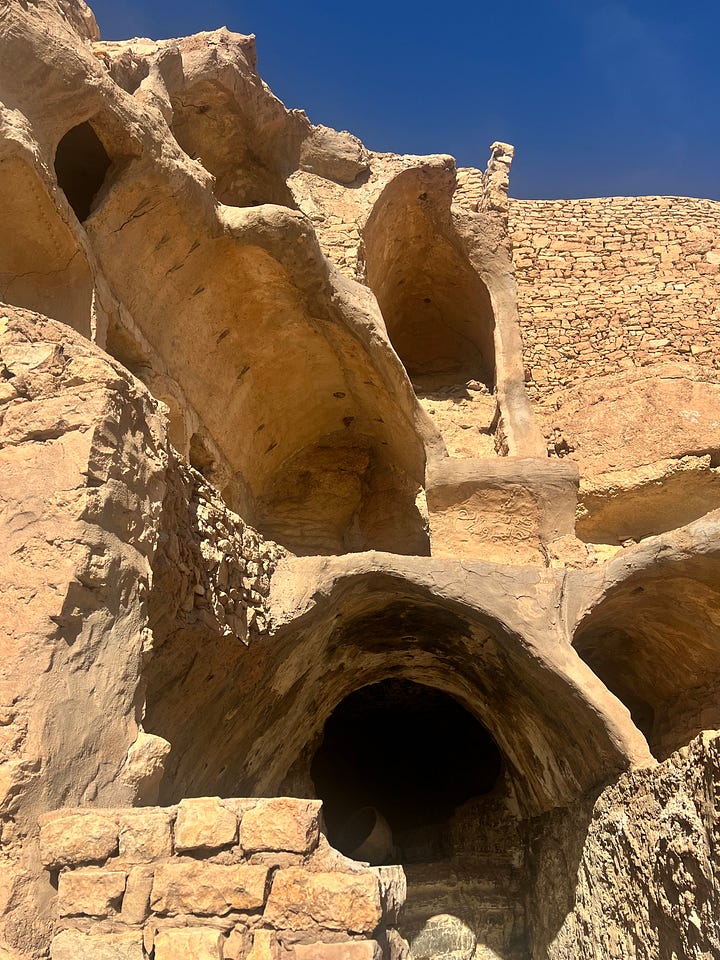
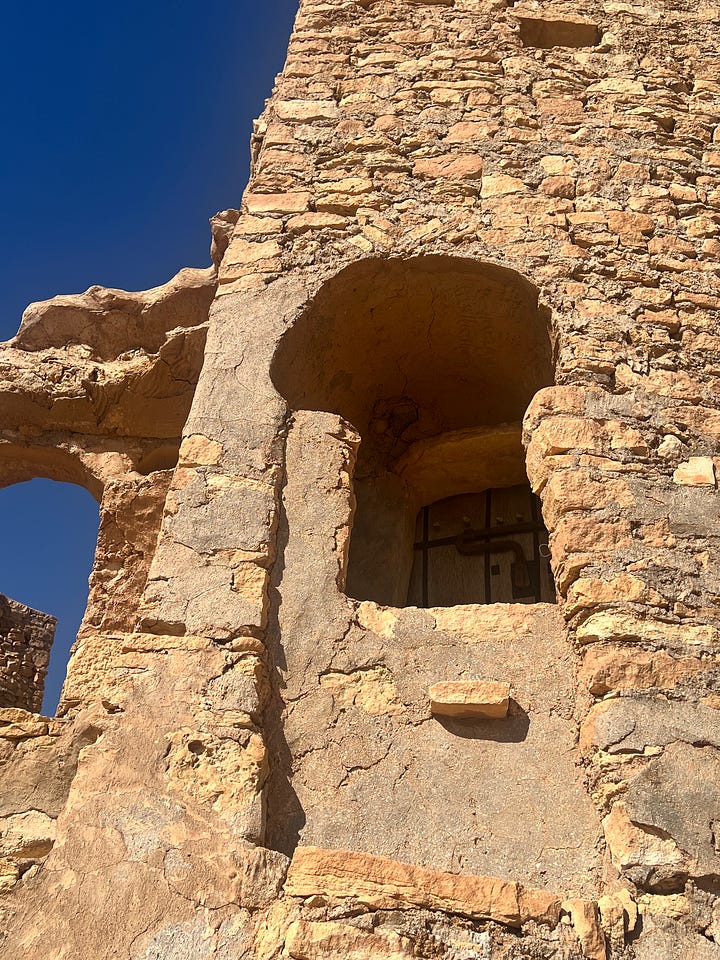
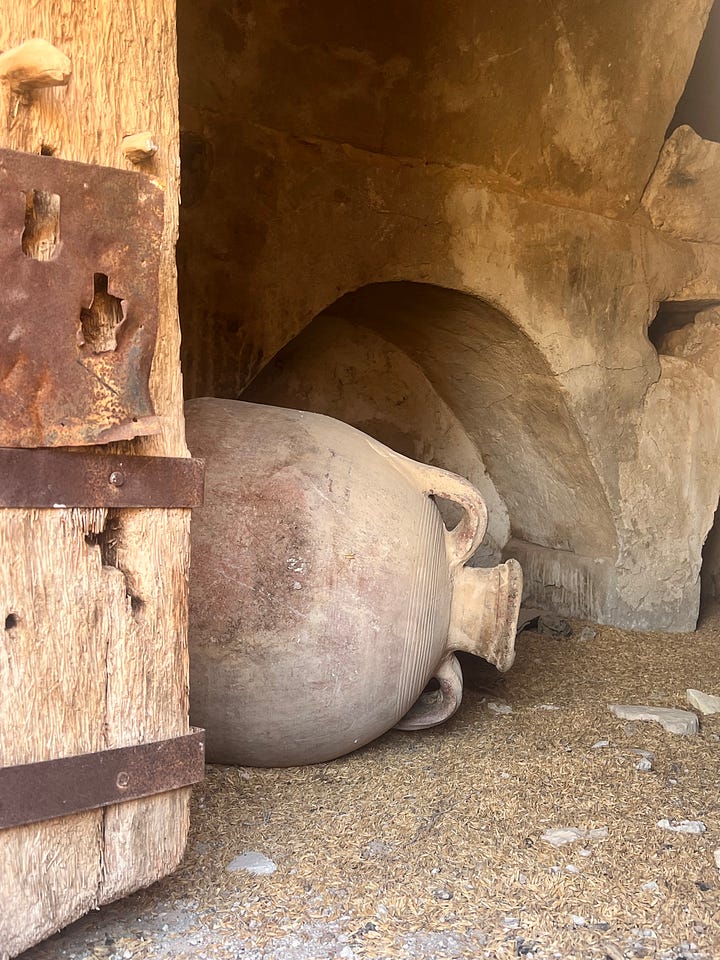
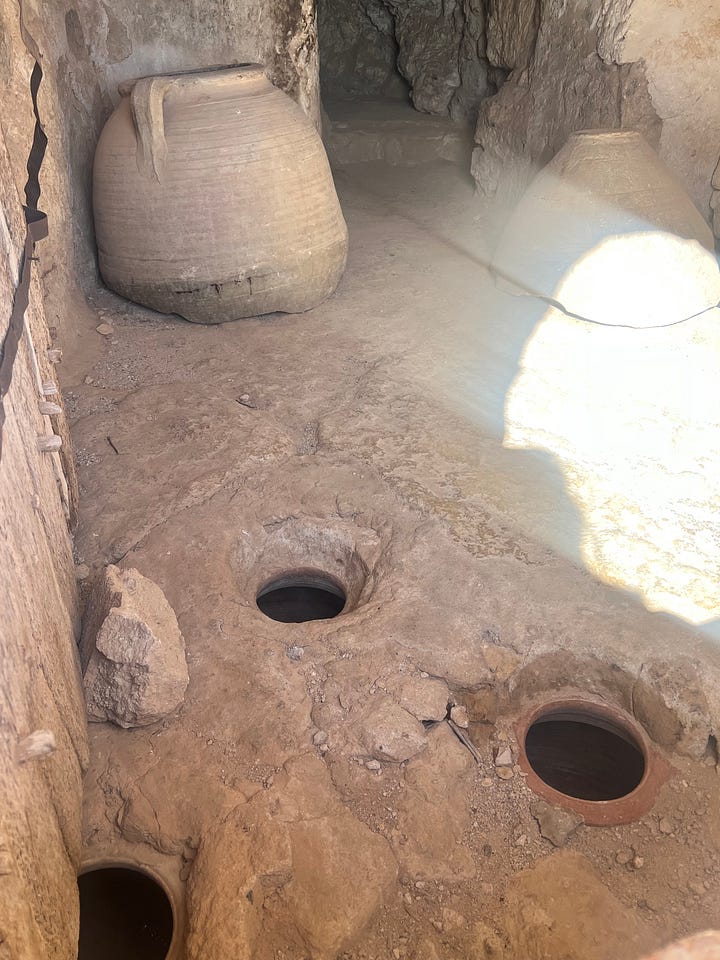
As we approached the highest point of the village, Ayoub shared another revelation that stopped me in my tracks.
"Amazigh have no written language," he said, the statement hanging in the air between us. "I taught myself four languages from YouTube, from tourists. Can speak Arabic, French, English, some German. But cannot write my name in Amazigh."
The weight of this statement landed differently than his matter-of-fact commentary about water and agriculture. In his voice, I heard not just the practical concern of a young man making his way in the world, but something more existential. What happens to a culture when its language exists only in spoken form, when its stories and knowledge transfer only through direct human contact? What wisdom disappears when the last speaker falls silent?
Around us, signs of this cultural fragility appeared in unexpected places. A battered sign with French text "INTERDIT DE MONTER" (climbing forbidden) leaned against a partially collapsed structure—the colonial language outlasting the indigenous architecture it sought to protect. Yet nearby, Ayoub proudly showed us beautifully woven textiles with intricate geometric patterns that his friend's mother had crafted by hand. These patterns represented another form of unwritten knowledge, passed down through generations of women whose artistic traditions preserved cultural memory without words.
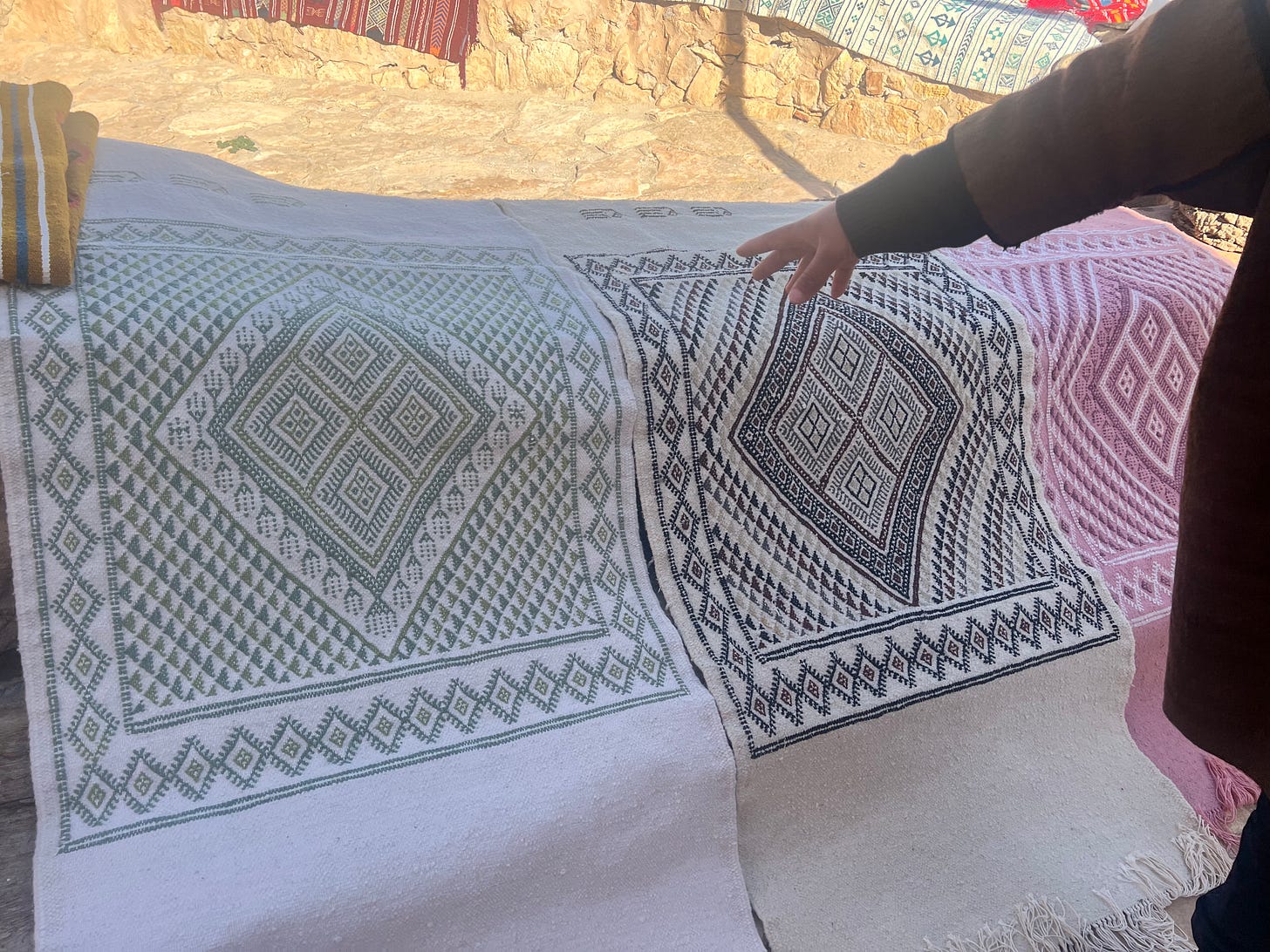
Standing atop the ancient fortified granary that had protected the community's seeds through centuries of uncertainty, my uncle photographed the cascading levels of dwellings below us, his camera capturing what my untrained eye could not fully appreciate—the architectural brilliance of a community that had transformed a hostile cliff face into a thriving vertical village.
As we made our descent, weaving through the village's narrow paths, children with their donkey appeared in doorways and on rooftops, calling to Ayoub in their native tongue. His responses made them laugh, and though I couldn't understand the words, the relationship was clear. He wasn't just a guide for tourists; he was a community member, recognized and belonging. I wondered how many of these children would remain here as adults, how many would learn the water wisdom of their ancestors, how many would pass on unwritten knowledge to the next generation.

Back at the base, we rejoined my aunt and mother, who had been enjoying capucin in the small café. My uncle, ever the documentary photographer, had already filled a memory card with images of homes built into impossible cliffs, doorways that had welcomed inhabitants for centuries, and the weathered faces of elders who had never known any other home than these mountains.
Though we had other sites to visit before the day's end, I was reluctant to leave Chenini. Tourism has a way of transforming places into performances of themselves, but here, despite Ayoub's practiced English and knowledge of what visitors expect to see, something deeply authentic remained. This wasn't a village preserved for tourists; it was a living community adapting to extraordinarily difficult circumstances while trying to maintain connections to ancestral knowledge. Their story wasn't a heritage museum exhibit but an ongoing negotiation between tradition and survival.
Driving away from Chenini, I felt the weight of untold stories, of wisdom encoded in stone and textile, of a language that might fade before it's ever written down. Ayoub stood at the edge of the road, his silhouette growing smaller in the rearview mirror as we descended back to the desert floor. His stories traveled with us—as urgent reminders of what the world stands to lose in the face of a changing climate and shifting cultural tides. The image of that solitary palm tree lingered, a living testament to the tenacity and ingenuity of a people who had made the desert bloom against all odds.
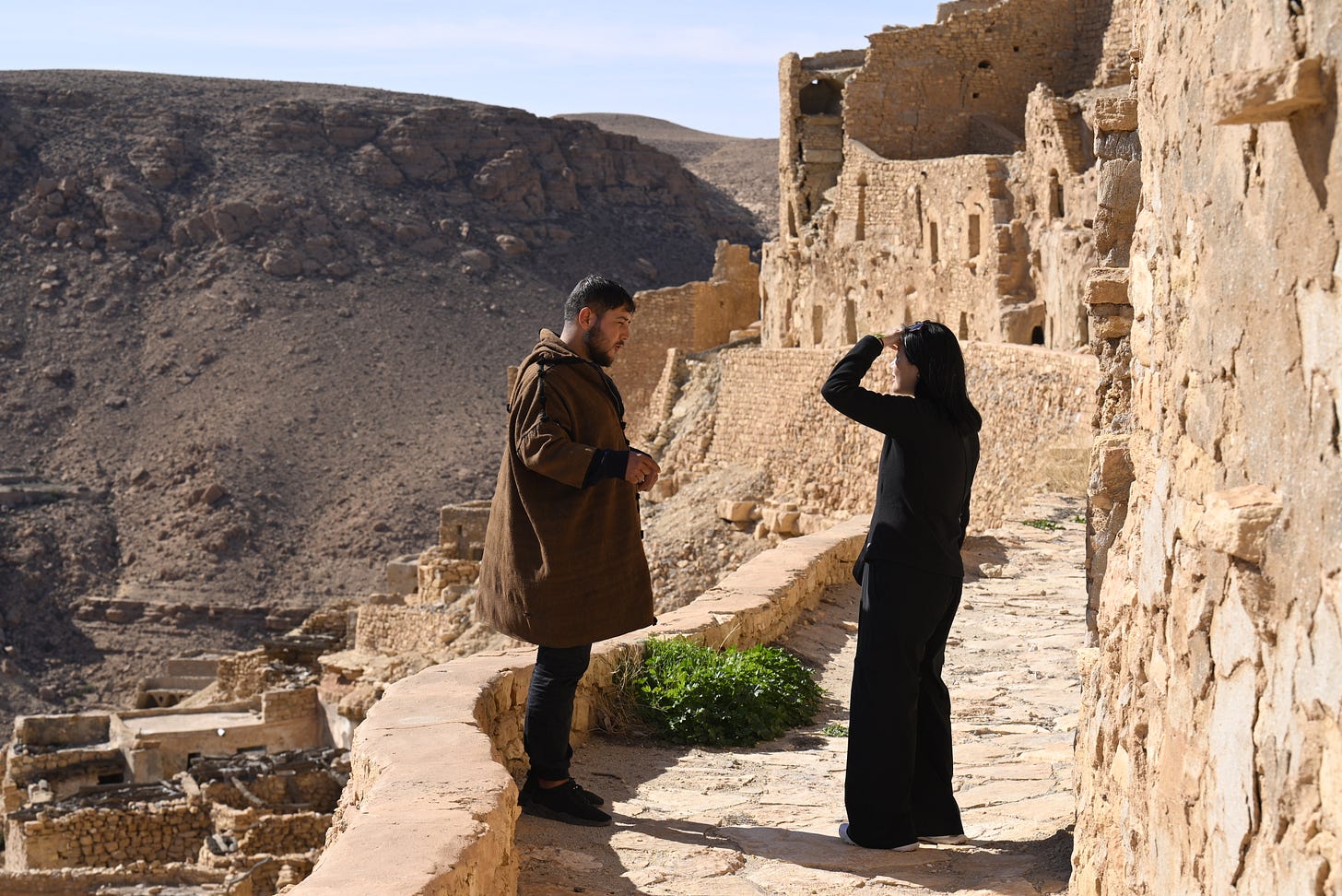
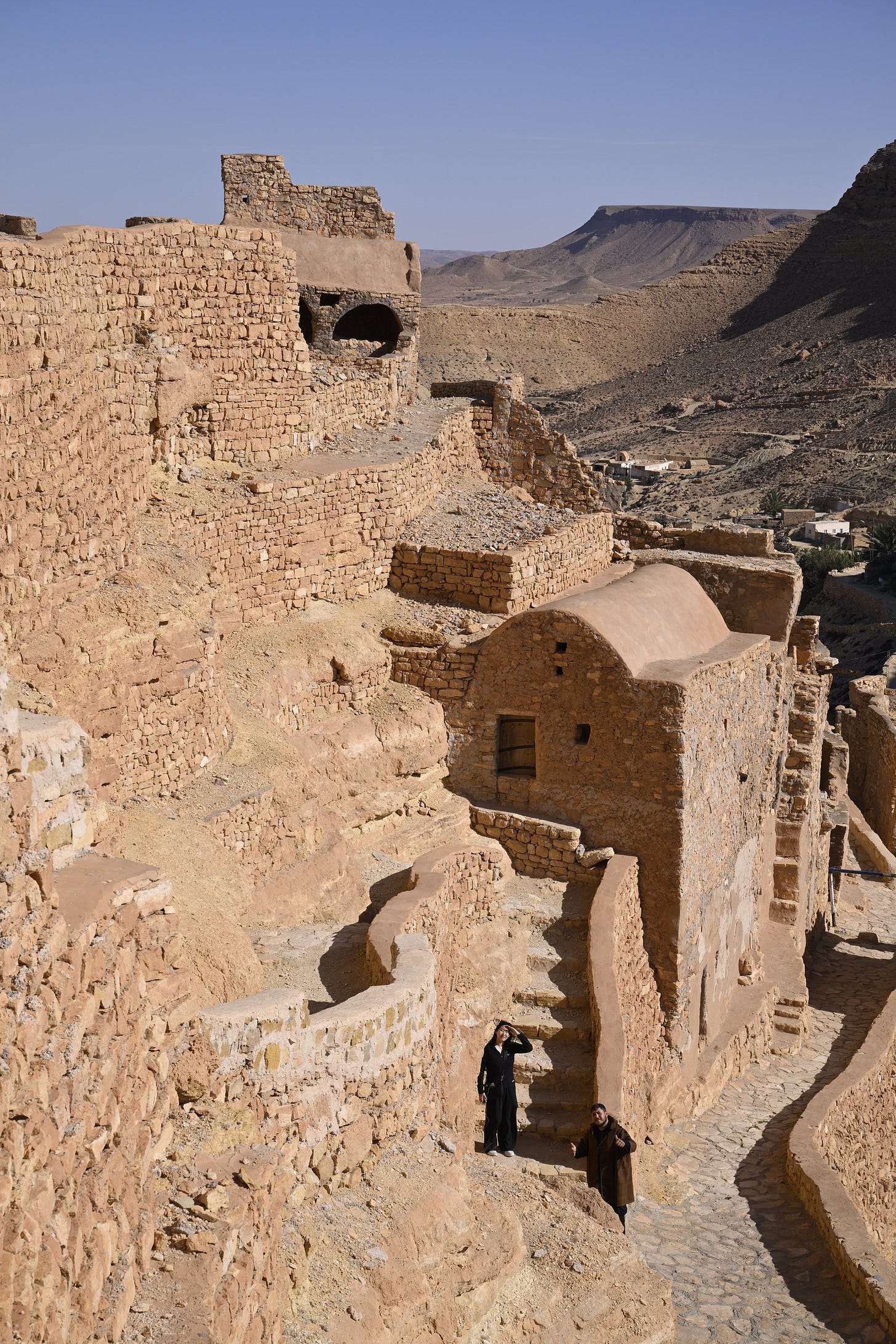
Leaving Chenini with more questions than answers,
Susie






I’ve really enjoyed the whole series.
Susie, I loved this story about Chemini and your guide, Ayoub. It was full of fascinating information and unique insights, told in a way that honored the past and while doing so illuminated how humanity's future might look. Also love the fact you're traveling with your family! Best regards, Joe